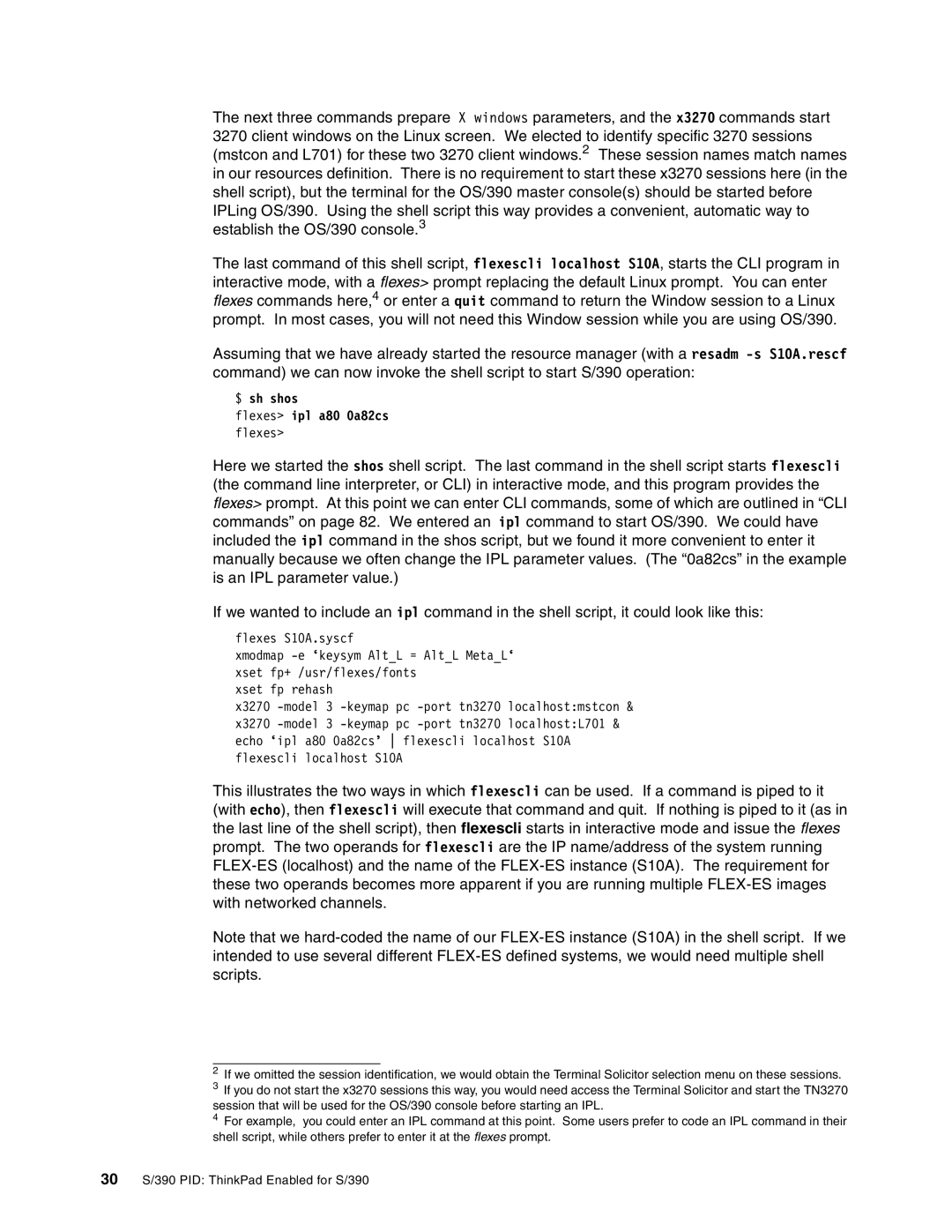The next three commands prepare X windows parameters, and the x3270 commands start 3270 client windows on the Linux screen. We elected to identify specific 3270 sessions (mstcon and L701) for these two 3270 client windows.2 These session names match names in our resources definition. There is no requirement to start these x3270 sessions here (in the shell script), but the terminal for the OS/390 master console(s) should be started before IPLing OS/390. Using the shell script this way provides a convenient, automatic way to establish the OS/390 console.3
The last command of this shell script, flexescli localhost S10A, starts the CLI program in interactive mode, with a flexes> prompt replacing the default Linux prompt. You can enter flexes commands here,4 or enter a quit command to return the Window session to a Linux prompt. In most cases, you will not need this Window session while you are using OS/390.
Assuming that we have already started the resource manager (with a resadm
$sh shos
flexes> ipl a80 0a82cs
flexes>
Here we started the shos shell script. The last command in the shell script starts flexescli (the command line interpreter, or CLI) in interactive mode, and this program provides the flexes> prompt. At this point we can enter CLI commands, some of which are outlined in “CLI commands” on page 82. We entered an ipl command to start OS/390. We could have included the ipl command in the shos script, but we found it more convenient to enter it manually because we often change the IPL parameter values. (The “0a82cs” in the example is an IPL parameter value.)
If we wanted to include an ipl command in the shell script, it could look like this:
flexes S10A.syscf
xmodmap
xset fp rehash
x3270
This illustrates the two ways in which flexescli can be used. If a command is piped to it (with echo), then flexescli will execute that command and quit. If nothing is piped to it (as in the last line of the shell script), then flexescli starts in interactive mode and issue the flexes prompt. The two operands for flexescli are the IP name/address of the system running
Note that we
2If we omitted the session identification, we would obtain the Terminal Solicitor selection menu on these sessions.
3If you do not start the x3270 sessions this way, you would need access the Terminal Solicitor and start the TN3270 session that will be used for the OS/390 console before starting an IPL.
4For example, you could enter an IPL command at this point. Some users prefer to code an IPL command in their shell script, while others prefer to enter it at the flexes prompt.
30S/390 PID: ThinkPad Enabled for S/390
